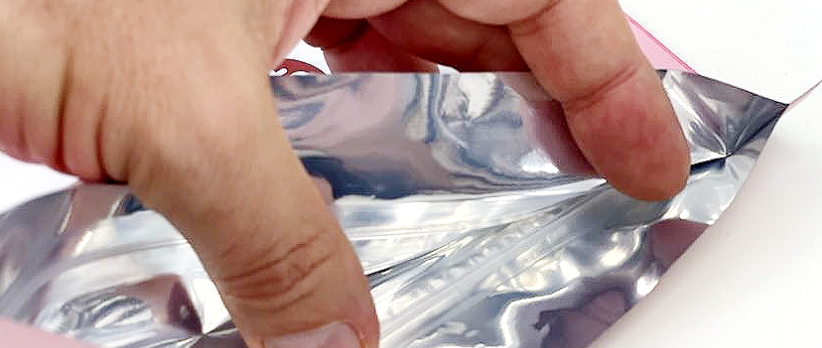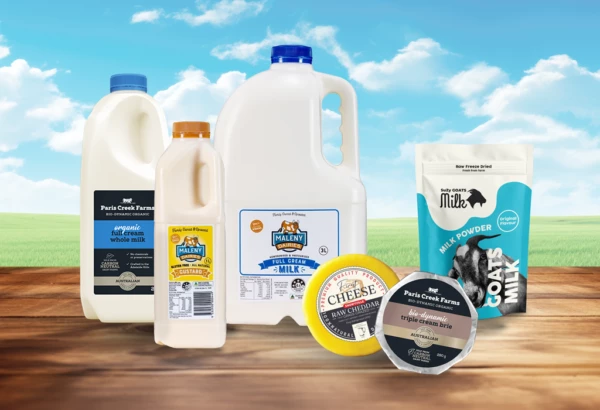I. Why Does Effective Frozen Food Packaging Matter for Businesses?
Frozen food packaging is critical for any food manufacturer looking to extend their products’ shelf life and boost customer satisfaction. Choosing the right frozen food packaging solution can prevent common food storage issues, such as contamination and freezer burn, caused by frozen foods losing moisture.
Manufacturers who prioritise food safety often invest in quality food packaging that ensures compliance with regulatory standards and meets consumer expectations. This guide discusses all you need to know about frozen food packaging and how to choose the best option for your food products.
II. Material Choice is Key

Food packaging materials that remain durable in freezing conditions ensure product integrity in the food industry. Such materials must resist becoming brittle at sub-zero temperatures while protecting the frozen food from environmental influences to ensure freshness during transit or storage. Below are the common food packaging materials to consider:
1. Plastic Films (Polyethylene (PE) and Polyester (PET))
Polyethylene (PE) remains flexible at temperatures as low as -40°C, making it a perfect choice for freezing applications. It is also moisture-resistant and adaptable to various packaging forms.
Polyester (PET) offers excellent strength and durability; hence, it is widely used for heavy-duty applications such as frozen meals and bulk foods. Manufacturers often choose these materials for their versatility and cost-effectiveness.
2. Flexible Plastic Pouches (Polypropylene (PP), Nylon, and Polyethylene)
Thanks to their flexibility and versatility, polypropylene (PP), nylon, and polyethylene are all common in the frozen food industry. Even so, each has unique properties. Polyethylene is more resistant at low temperatures and is more flexible than polypropylene. On the other hand, nylon has exceptional strength and wear resistance.
3. Expanded Polystyrene (EPS) Foam
EPS foam is widely used for insulating frozen foods due to its excellent thermal properties. It provides strong insulation and impact protection, making it ideal for packaging frozen fish, meats, and other temperature-sensitive products during long-haul distribution and storage.
4. Aluminium Foil
Aluminium foil is a malleable and lightweight material that provides excellent barrier protection against light, moisture, and oxygen. It is commonly used in packaging to extend the shelf life of frozen products, particularly for delicate items like baked goods or dairy products.
III. Focus on Barrier Properties
Effective barrier properties in frozen food packaging help prevent spoilage by blocking gases, light and moisture. High-barrier materials like EVOH (ethylene vinyl alcohol) are used to maintain product freshness.
EVOH keeps oxygen off the frozen food, which helps prevent oxidative rancidity, particularly in meat and fish products. This often occurs when oxygen interacts with fats, leading to off-flavours and spoilage. Manufacturers should, therefore, choose high-barrier packaging materials to preserve food quality, extend shelf life, and reduce waste.

IV. Incorporate Resealable Features
As consumers seek convenience and sustainability, there is an obvious demand for resealable package solutions that align with eco-friendly practices. The resealable feature in frozen food packaging solutions reduces food waste and allows easy access while maintaining product freshness after opening.
A resealable feature enhances the product’s appeal and helps improve customer satisfaction. This boosts customer sales and leads to increased revenue generation in the long run.
V. Prioritise Sustainability
Over the years, there has been a push for sustainability across the broader manufacturing sector. The Australian Packaging Covenant Organisation (APCO) has been at the forefront of championing eco-friendly packaging.
To embrace sustainability in their operations, food manufacturers are adopting recyclable solutions such as flexible packaging that offers a lower carbon footprint by cutting plastic waste by up to 70% compared to rigid containers. Similarly, innovative solutions such as bioplastics and PE films provide sustainable alternatives without sacrificing packaging performance.
VI. Which Type of Packaging Best Suits Frozen Food Packaging?
Now that you know the different materials you can choose for your frozen food packaging needs, you will also need to select a flexible packaging design that is space-saving and convenient.
At QLM Group, we offer stand-up pouches, which stand upright thanks to the gusseted bottom. Manufacturers can further enhance their stand-up pouches by incorporating innovative packaging options like barcode labels and QR codes, which help improve traceability and inventory control.
Besides stand-up pouches, a few other flexible packaging solutions are also highly effective. These include:
- Sachets and 3SS (three-side seal) bags: They are compact, cost-effective, and allow for professional branding.
- Centre seal bags: They are highly adaptable and Ideal for mass-produced single portion products.
- Box Bottom bags: Besides their aesthetic appeal, they often come with a resealable zipper and vapour barrier to protect your products from the elements.
- Side gusset bags: This is a stand-up packaging option with a larger filling volume. It can also carry more weight.

Depending on what works well for your food products, each choice allows you to tailor packaging solutions based on product size, sustainability goals and consumer convenience. Contact the QLM group today to explore the different flexible packaging solutions before choosing one that works for your business.















